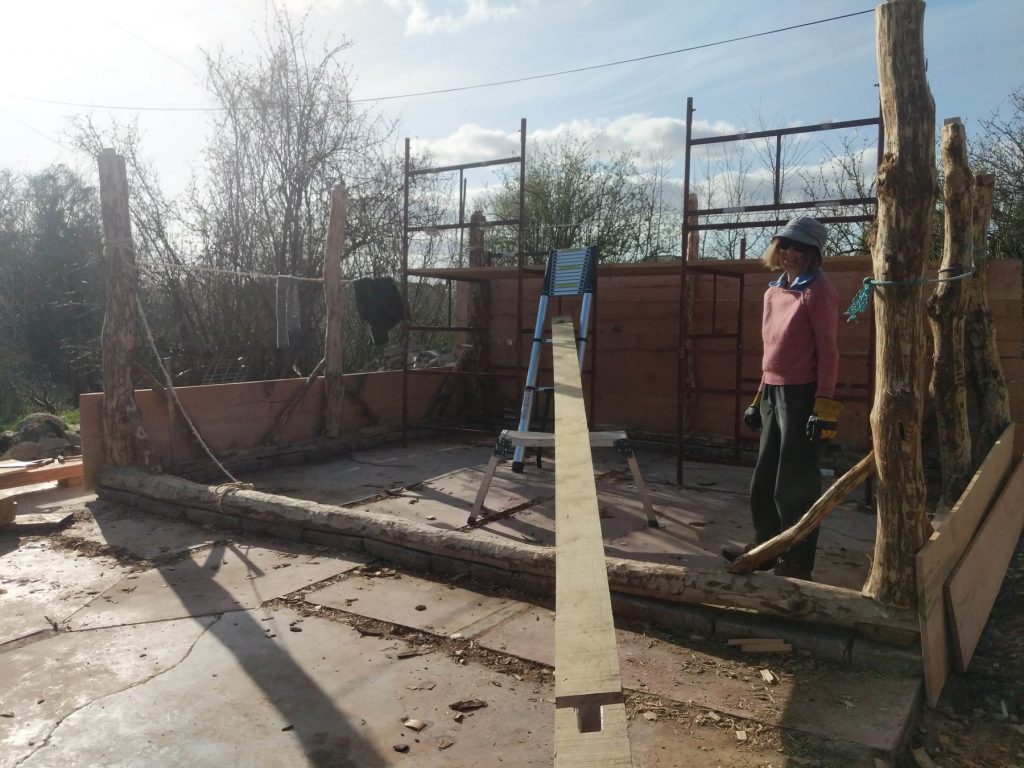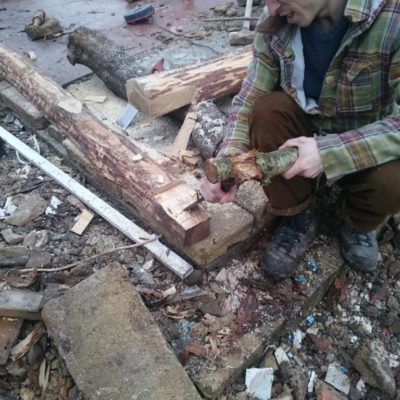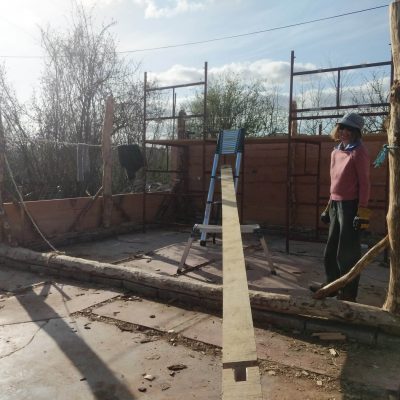Building a Bat Barn; Part Two
Building a Bat Barn; Part two
Colwall is one place where the otherwise rare Horseshoe Bat is actually quite common. The bats, over winter, stay in the old railway tunnel under the Malvern Hills, but in the summer they search for a roost to rear their young. Horseshoes need a dry, warm, quiet place they can swoop into, so the regular bat box won’t do for them, in fact very few places will … when you look about, you see nearly all barns, sheds, houses are shut off. So … I decided to build a place specifically for them, but also one I could use to store wood, or anything else. The barn would go on the footprint of an old demolished bungalow, so the footings were all in place. It would have a lower part closed on two sides and, the most important bit, a loft for the bats. Being an archaeologist, I thought, ‘aha, my chance to try making a timber framed building’ using green wood technology, post and rail, mortice and tenon, simple tools and hardly any nails, just as people would have made them in the medieval period. I have the enthusiastic and able help of Nathan, otherwise, so far, it is just him and me.
My house is built on spoil from the railway tunnel when it was first dug over a hundred years ago. Woodland has grown up on it, with little or no management, straight and tall searching for the light. Perfect for the build. We selected three oaks, one with two stems, the maximum diameter was 25cm. Felling them with hand saws was easy, but shifting them from lodging in the trees and to the build site was very hard. I would have liked a horse and chain as the ground is muddy and the wood very heavy and unwieldy, but in the end we waited for a hard frosty day and got them down teetering on a wheel barrow. Two woods were chain sawed down the middle to make matching pairs. We would have liked to split them using wedges and this would definitely be much quicker and better, but we lost our nerve, a knot at the beginning of one skewed the split, so we changed tactic and got in the chain saw. Medieval builders had more experience and expertise than us, and probably more wood.
We cut the woods to length (the build is 4m by 5m), stripped the bark (using an axe from J-Mart), and then assembled the floor plate. Then we made ‘lap joints’ for the corners. Cutting half the width over 20cm or so over each piece and fitting them together. Making the fit with bendy wood is very time consuming, chiselling and planing over and over, working out why it is still not fitting, flipping the heavy wood and trying again. Eventually we got a reasonable fit on all four corners.
We are now making mortice and tenons to fit the uprights which are four large posts on the corners and three smaller studs on the sides. We have made wood templates for 2 ½ inch and 3 x 2 inch tenons and mortices. We are now drilling through the mortices on the footplate, using a hand brace with long narrow auger bits on the corners and larger auger bit combined with a good ‘framer’s ‘ chisel digs out the hole. The tenons can be cut to size using a chain or hand saw as the first stage, then finishing with the chisels for the necessary perfect fit. We are making through tenons for the base plate, and 2 inch depth ‘blind’ tenons on the tie beams.
The wood for the remaining build has been ordered from Whitney Mills, a Herefordshire firm that uses home grown oak or Douglas Fir. The remaining wood consists of three large wall tie beams, six principal rafters, three wall cross beams, roof covering, floor boards and rough sawn barn cladding sides. I have put the order in, and they will deliver we hope soon. We have worked out a way of levelling the building (using water in a hose pipe). I am not sure yet how we will lift the wood onto the structure posts but I am sure we will manage.
The deadline is mid-March, this is when the bats will first emerge and think about their summer roost.



